Essential techniques for making your communications more customer-focused
It’s no secret that effective timing is an essential ingredient of successful marketing. Spotting seasonality and maintaining frequency are the easy things to manage. Getting people to want to spend time with you is more of a challenge.
This doesn’t just mean showing up at the right time, it means earning the right to person’s precious time
To pull people through the buying decision, you need to understand how much time they want to give to the process. Then, ensure that you have the right tools and techniques of an appropriate duration, available when they want them.
Grabbing someone’s attention is something that’s done in seconds. A person will either notice you, or they won’t. Then the moment has passed. If they then start to consider buying from you, they will gradually increase the time that they’re happy to devote to finding out about your products and services.
Leading on from the discussion in my last article about balancing emotion and logic in your messages, it’s easy to see that emotional triggers get intuitive and instinctive responses, which means they’re quick. As the logical brain kicks in the processes become far more conscious and considered, and take more time.
You’ll also find that the greater the risk or value of the purchase, the longer the buying process.
This is not least because people feel they need to show that they’re giving the decision proper attention.
In professional buying, this is called due diligence. But, it doesn’t only happen in business.
The interesting thing about this phenomenon is that even if a person has already completely emotionally bought-in to the purchase, they will often slow themselves (or someone around them) down to show that they’re not being rash.
EXAMPLE: Does this sound familiar?
I recently bought a new handbag. It wasn’t cheap. I went into the store looking for something quite different, and the bag caught my eye. I immediately loved it and had all but decided to buy it before looking at the price tag. I then proceeded to show it to my husband, and on the 20-minute walk around the store I rattled off how it would go with so many different outfits, it would fit my laptop and work books which meant I could use it for work and casual; I pointed out the high-quality stitching suggesting that it would last – I even had a stab at working out how much it would cost per use over the next six months or so. Now, let’s be clear – my husband didn’t care whether I bought the bag or not, it’s my money, and my decision. I wasn’t seeking approval from him; I was seeking approval from me. By taking the time to demonstrate (and externally validate) the logic of my purchase, I could justify my emotional desire to have it.
This example for a purchase nearer the impulse end of the spectrum. Which goes to show that whatever you’re selling, you need to give people the time and space to run this process.
To secure more, and more profitable, sales your marketing needs to take the emotional and logical messages from the first element of the Watertight Marketing Framework, and deliver them in steadily increasing time chunks across the buying decision, as in this second element of the framework. If you nail this you will steadily earn the right to a person’s precious time.
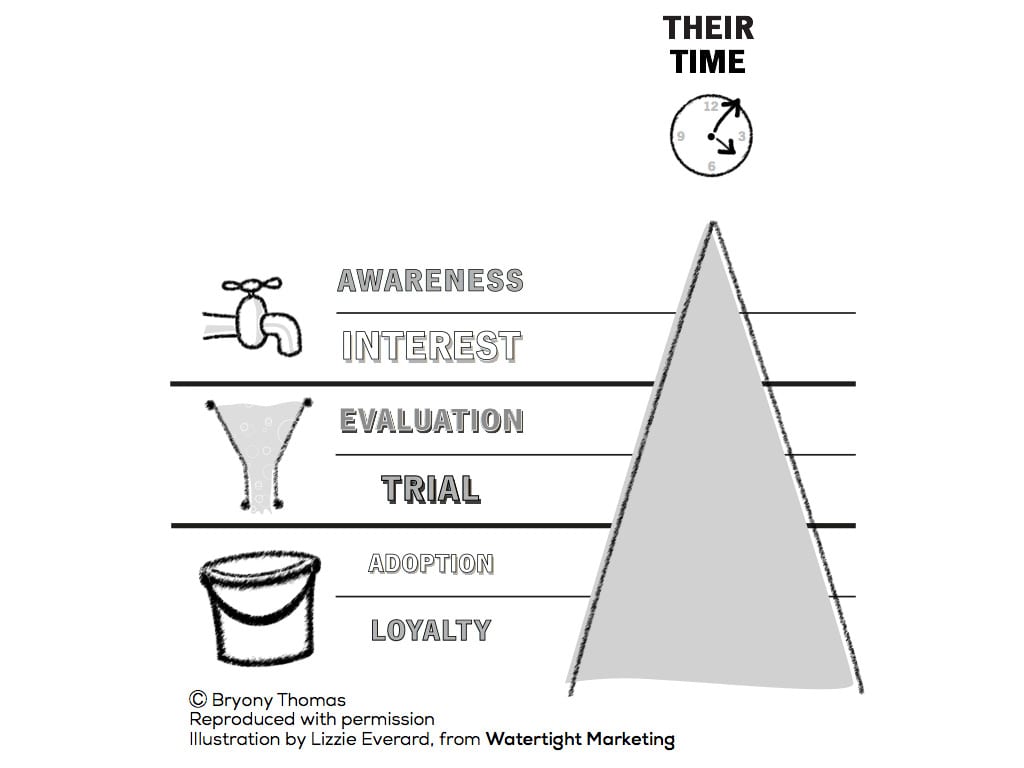
Are you earning the right to a person's time?
Note: This framework builds on an original model of decision making from Dr Philip Kotler.
Match their schedule
You’ll need to work out what amount of time your buyers want to give to this process, and then design materials or activities of about that duration. Put yourself in their position and think about how you would go through the buying decision.
Consider the likely blocks of time they would have in their day for thinking about it. For a non-work purchase this is likely to be over a cup of tea, in a lunch break, on the journey to work, in the evening in front of the TV, or at the weekend.
For a professional buying decision, it’s worth thinking about the way that people typically chunk their work diaries – for example, 30 minute or 1 hour meetings. And, it’s worth thinking about what you can do to help them make better use of a hectic schedule. Can you find ways of fitting a little information into those ‘times in between’, like 5 minutes before a meeting, whilst travelling, etc?
For my marketing consultancy business, this looks something like this, over a 6 to 12 week period:
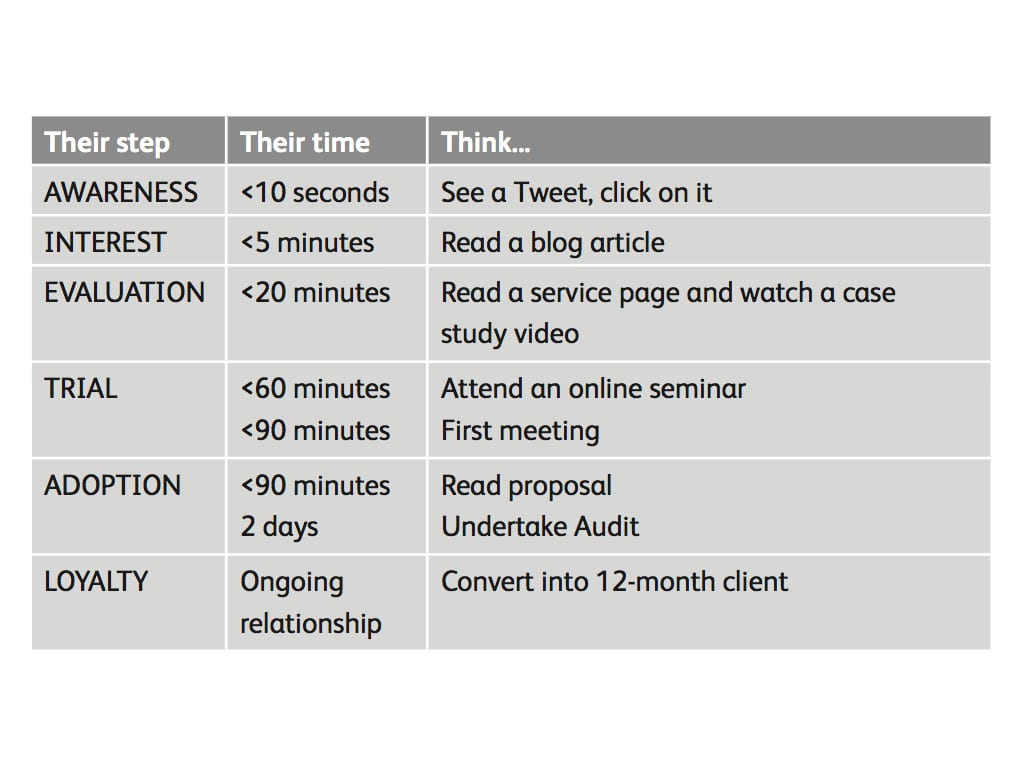
To map this for your own business, lay out the stages in a typical buying decision and ask yourself:
- How long might you have to grab their attention?
- If they’re casually interested, how long will they give it?
- If they’re starting to evaluate what you do, how long?
- How long might they give you to demonstrate or explain your products?
- How long might they spend reading a detailed proposal before approving it?
Don't give them too much, too soon
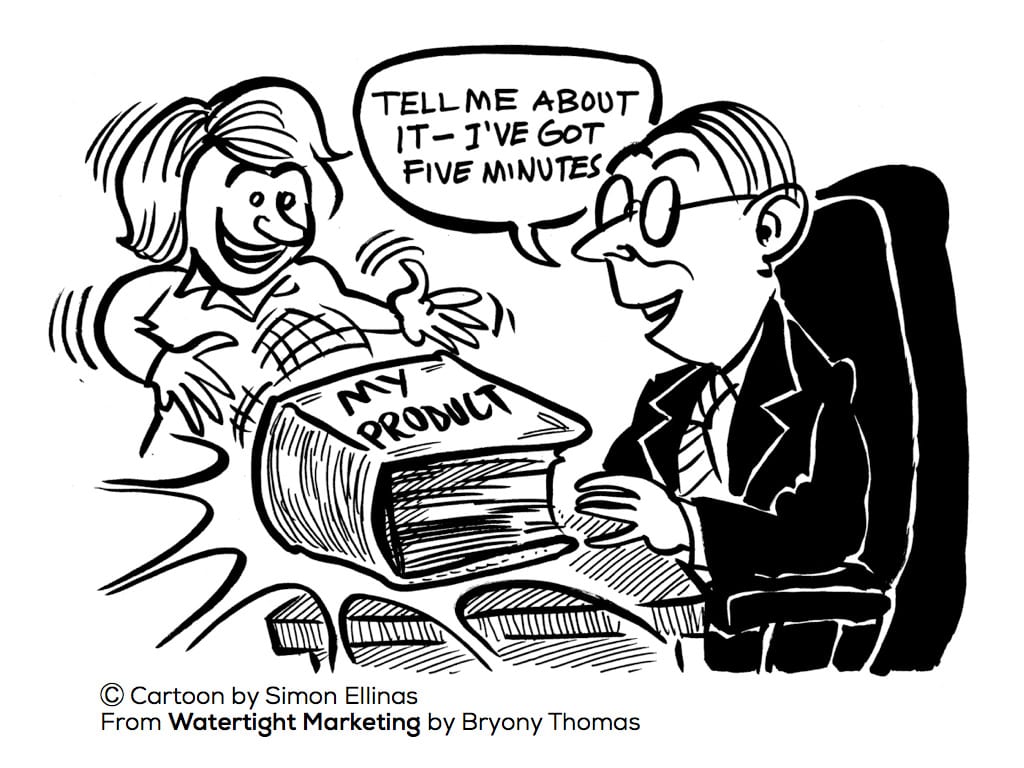
Getting your timing wrong can scupper your sale. If your buyer has 5 minutes, but all you have available to them is a densely packed product guide that would take 20 minutes to read, you’ve lost them. And, if you have a competitor who got to the point more quickly, it’s highly likely that this buyer is now considering their offer, not yours.
Having an idea of the different time blocks your buyer is likely to want to give to their decision allows you to create appropriate tools and materials to meet this.
Most businesses already have lots of great material, it’s just not cut up into the right chunks. You’ll hear people talk about bite-sized chunks.
It is worth taking a moment to say that if someone wants a meal, you need to give them one. That is, if they want to really interrogate your offering, you need to have all the information they would want available. They just may not want it all in one sitting.
To get really practical, let’s consider how you might present a case study across a buying decision. A case study is not one item – it’s a piece of content that work its hardest when split into appropriate chunks:
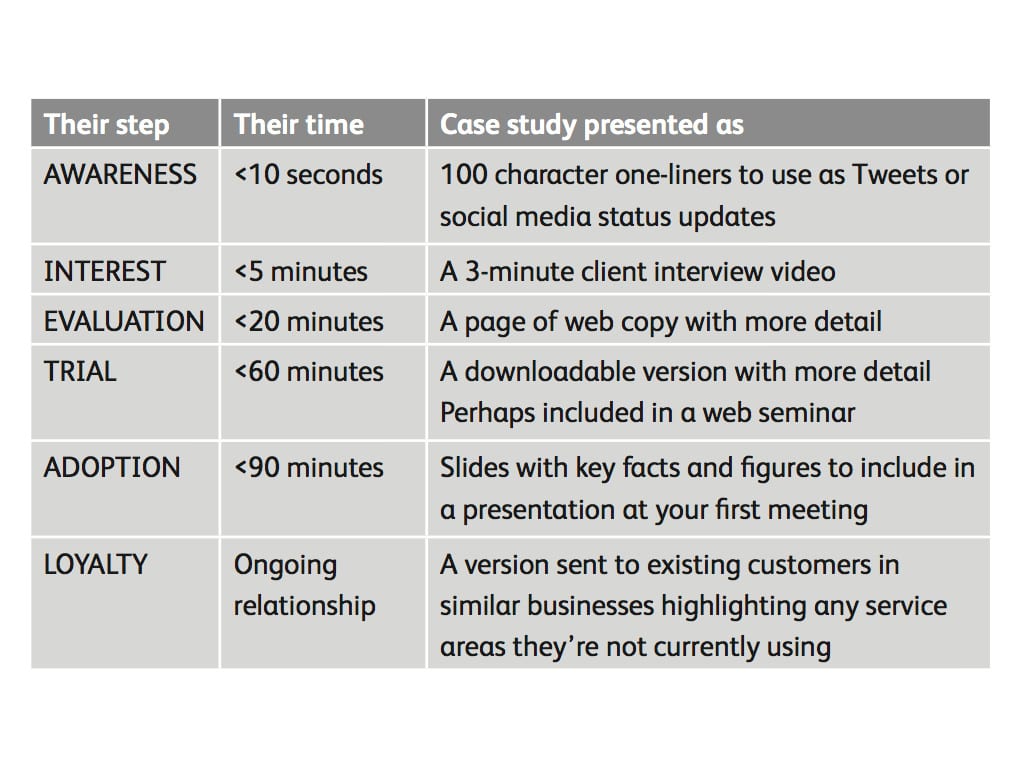
Have you mapped your content into time-bound chunks across the buying decision?
If you’ve worked out the likely durations your buyers spend at each stage of the process, you now need to take a look at your marketing materials to see if you can slice them up accordingly. This is much more effective than putting everything in one place and expecting your buyers to look at it all at once or sift their own way through it.
By breaking up your materials you allow your buyer to:
- Reach the right messages at the right time
- Digest what they need to in the time they have available
- Feel like they are giving the decision due attention
- Dip into different materials over an extended period of time.
The most important thing about recognising how people spend time as they move through their decision, is that you can create compelling marketing and effective sales conversations that steadily earn the right to their precious time.
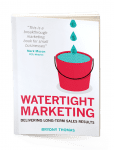 Thanks to Bryony Thomas for sharing her thoughts and opinions in this blog post. She is the best-selling Author and Founder of Watertight Marketing, and a no-nonsense marketer and business speaker, specialising in helping ambitious small businesses set things up. Her blog post is adapted from her 5-star book, Watertight Marketing, described as an entrepreneur’s step-by-step guide to putting a marketing operation in place that delivers long-term sales results. You can download a free sample chapter or connect with her on
Thanks to Bryony Thomas for sharing her thoughts and opinions in this blog post. She is the best-selling Author and Founder of Watertight Marketing, and a no-nonsense marketer and business speaker, specialising in helping ambitious small businesses set things up. Her blog post is adapted from her 5-star book, Watertight Marketing, described as an entrepreneur’s step-by-step guide to putting a marketing operation in place that delivers long-term sales results. You can download a free sample chapter or connect with her on
LinkedIn, Twitter, Google+ or Facebook.











